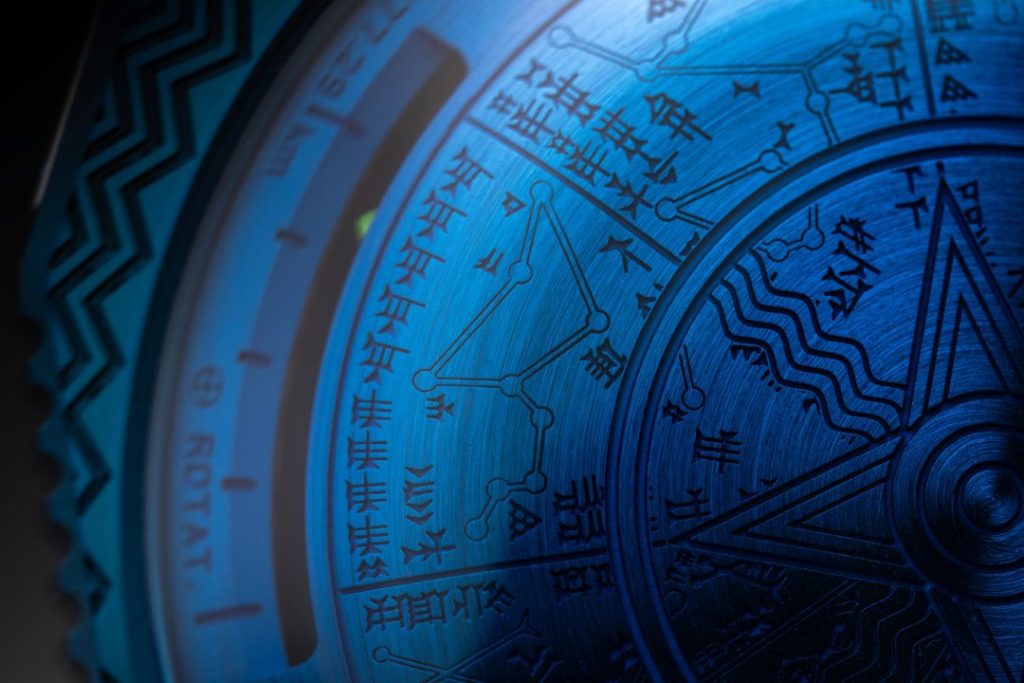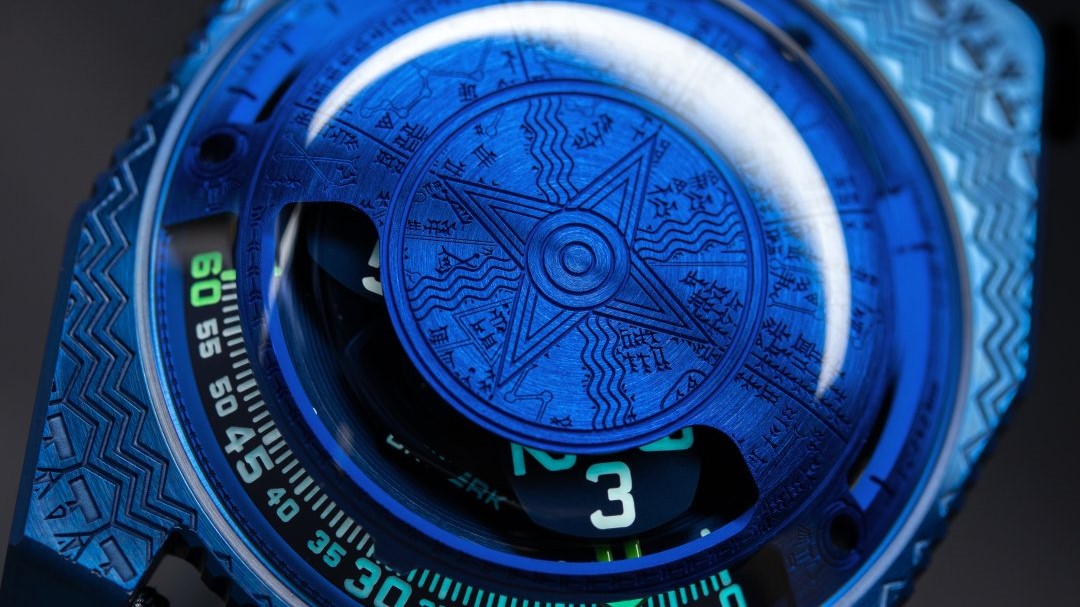New Watch! • 18 Oct 2023
URWERK Continues to Transcend Space and Time with UR-100V Time and Culture 2
Episode two of URWERK’s UR100-V Time and Culture line pays tribute to the Sumerians, who defined the very first unit of time which laid the foundations for time measurement as we know it today.
Back to the Beginning
Introduced in 2022, URWERK’s UR-100V Time and Culture line honours the ancient cultures that established the basis of time measurement. Following the first episode dedicated to the Aztecs, the latest instalment is an homage to the inhabitants of the Mesopotamian city of Ur.

Five millenia ago, the Sumerians, inhabitants of of Ur, laid the foundations for time measurement as we know it today. Occupying the Tigris-Euphrates valley in today’s Iraq, the Sumerians established the sexagesimal (counting in 60s) system that was used for mathematics and astronomy. Considered as the golden number, 60 became the basis of counting minutes and seconds, with 60 seconds to a minute, and 60 minutes to one hour.
This is also tied to the beginnings of URWERK – the name of the brand concatenates “Ur”, the very town in Mesopotamia inhabited by the Sumerians, with the German word “werk”, that means to work, create, evolve, shape, forge, and to arouse emotions.
The Mythology of Time
URWERK’s co-founder and artistic director Martin Frei explains: “Through my reading and my travels, I’ve been fortunate enough to discover all the richness and diversity of the Sumerians. Their mythology is rich and fertile, their constructions truly timeless. This astonishingly little-known civilisation is fascinating. For this new creation, I loved staging some of its hallmark features: mythology, astronomy, astrology and time measurement.”

Beneath the sapphire dome of the UR-100V Time and Culture II, aka “Sumer”, stands a veritable Pantheon in honour of these remote and ancient divinities. The sun god, Utu, takes central presence here: depicted in the original form from over two thousand years ago, the four-pointed sun representing the four cardinal points is surprisingly contemporary. Between the lugs, the moon god Nanna, chief divinity of the city of Ur, await in the shadows as if floating in orbit.
The choice of blue as the primary colour of the UR-100V “Sumer” is no coincidence. This chromatic choice references lapis lazuli, the stone associated with Innana, goddess of love, war, and fertility. Space-related shapes in the periphery convey the Sumerian contributions to astronomical knowledge, with their authentic sky charts and planispheres.

Just as with the first Time and Culture, the motifs here have been reproduced with the utmost meticulous care. The lines laser-engraved, its accuracy and finesse can only be appreciated through a magnifying glass. The ridges of the motif are satin-brushed, while the hollows are micro-sandblasted to create a velvety finish designed to highlight the volumes and do justice to its heritage.

On this UR-100V joining the Time and Culture line, the hours and minutes are displayed alongside data on the Earth’s rotation. Once the 60th minute has passed, the minutes hand vanishes and reappears as a kilometre counter. It illustrates the 477.29 kilometres covered every 20 minutes by every inhabitant of Ur. This is the silent journey made thanks to the Earth’s rotation. At the exact opposite end of the scale is the Earth’s revolution around the sun, i.e. 35,742 kilometres per 20 minutes. On the face of the UR-100V, hours and kilometres share the same status, the same value scale.
Discover this watch and more from URWERK at The Hour Glass.











